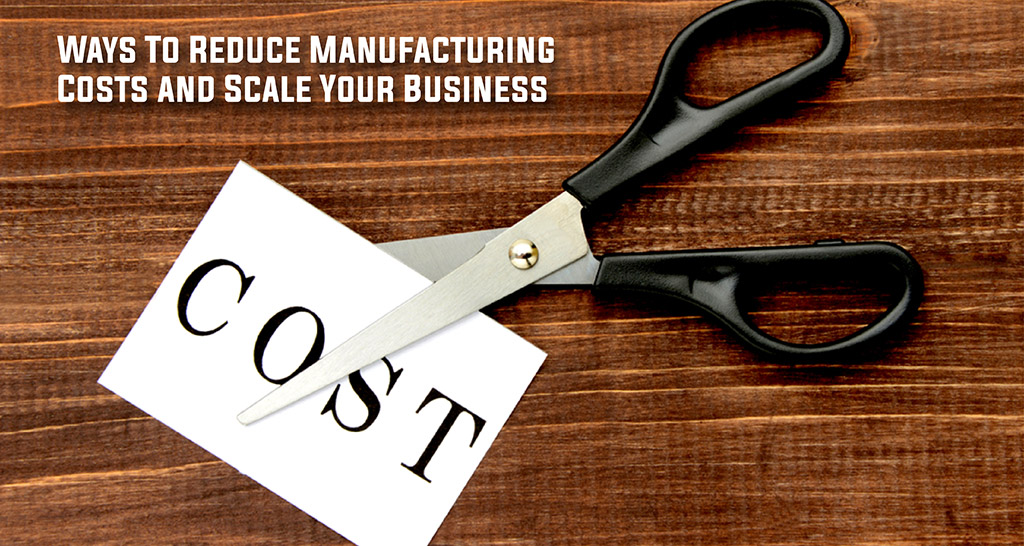Picture yourself overseeing a manufacturing business, where day after day, you witness expenses soaring as your earnings remain stagnant.
Sounds all too familiar, doesn’t it? You are not alone; numerous manufacturers share this tale.
But what if we tell you there are time-tested tactics that can drastically cut down those costs, enhance productivity, and pave the way for your business growth?
Absolutely, they exist! And that’s what this post is all about. So, keep reading to find out those golden insights.
1. Efficient Resource Management
Managing resources efficiently is the cornerstone of a cost-effective manufacturing process. It’s not just about purchasing raw materials; it’s about ensuring optimal utilization.
Wastage can significantly drain your finances, especially when raw materials remain untouched or are mishandled. So, implementing an effective inventory management system can be transformative.
This allows for timely restocking, avoiding over-purchasing, and minimizing storage expenses.
Furthermore, using digital tools can help in tracking inventory. This will further ensure timely audits and guarantee each item’s proper utilization.
2. Innovative Tools for Efficient Manufacturing
In manufacturing, every detail matters. Precise cutting ensures products are made right the first time, saving both time and money. However, achieving this precision requires skilled manpower and the right tools.
Consider Core Cutting Machine as an example. This machine offers exact cuts every time and ensures high-quality production. This ensures that each product adheres to its intended design and specifications. Such high-level precision elevates the quality of production, giving businesses a competitive edge.
By leveraging such sophisticated machinery, businesses get quality work and also save time and money.
3. Review Supplier Contracts
Loyalty to suppliers is commendable, but it’s essential to reassess the value you are receiving regularly.
Market dynamics change, and there might be new suppliers offering better quality materials at more competitive rates.
So, periodic reviews of supplier contracts can pull out potential areas of savings. It’s also wise to maintain open communication with suppliers, discussing possible discounts for bulk purchases or long-term commitments.
But remember, while cost is a factor, quality should never be compromised.
4. Train Employees Regularly
The efficiency of a manufacturing unit is often directly proportional to the skills and knowledge of its workforce.
So, it is advisable to invest in regular employee training that can yield substantial returns in the long run.
When employees are well-versed with the latest industry practices and are trained to operate new machinery, they are less likely to make errors.
This ensures a smooth production process and reduces the costs associated with machine breakdowns and product recalls.
Additionally, a well-trained staff can proactively identify areas of improvement, suggesting measures that can further enhance productivity and reduce costs.
5. Optimize Energy Consumption
The manufacturing sector is one of the major consumers of energy. Rising energy prices can significantly dent profits. Therefore, it’s crucial to optimize energy consumption.
To make a notable difference, you can switch to energy-efficient appliances, such as LED lighting and high-efficiency motors.
Additionally, investing in smart energy management systems helps monitor real-time energy usage, enabling proactive adjustments.
Making sure machines don’t run when they aren’t being used and keeping them in good shape to stop energy leaks are two more steps that can save a lot of money over time.
6. Adopt Lean Manufacturing Principles
The essence of lean manufacturing lies in creating more value with fewer resources. Using this principle can drive down costs while boosting productivity.
Tools such as value stream mapping can help identify bottlenecks and redundancies in the production process.
So, make sure you address these areas to ensure that every stage of production adds value and nothing goes to waste.
Embracing a culture of continuous improvement, where employees are encouraged to suggest optimizations. Also, ensures that the manufacturing process remains lean and agile.
7. Embrace Technology
The modern manufacturing landscape is rapidly evolving, with technology at its core. Those who hesitate to adapt risk being left behind.
Automated machinery and digital solutions enhance production speed and improve product consistency and quality.
Moreover, technology helps in monitoring machine health, predicting maintenance needs, and ensuring minimal downtime, all contributing to cost savings.
8. Reduce Production Waste
Last but not least, the enemy of profitability is waste. Waste may also take many other forms in the manufacturing industry, from unused raw materials to lengthy machine downtime.
Adopting a zero-waste mentality may make identifying and resolving waste sources easier.
Implementing a circular economy strategy may turn a cost center into an income stream. It’s because it allows waste materials to be sold or repurposed.
Final Thoughts
Reducing manufacturing costs and scaling a business isn’t a one-time task. It’s an ongoing process that requires vigilance, innovation, and a willingness to adapt. And if you implement the strategies listed above, they will help you witness a drastic reduction in your expenses. Moreover, you can position your business to new heights better.

